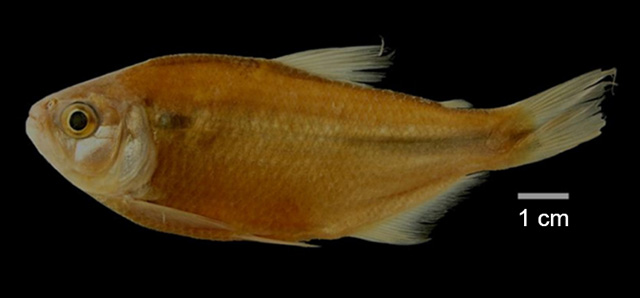|
Astyanax gandhiae Ruiz-C., Román-Valencia, Taphorn, Buckup & Ortega, 2018 |

|
|
photo by
Ruiz-C., R.I. et al., 2018 |
| Family: | Acestrorhamphidae (American tetras), subfamily: Acestrorhamphinae | |||
| Max. size: | 10.96 cm (male/unsexed) | |||
| Environment: | benthopelagic; freshwater | |||
| Distribution: | South America: Peru. | |||
| Diagnosis: | This species, a member of the orthodus species-group of Astyanax, differs from other members of the group by the following characters: differs from othodus, villwocki, superbus, bopiensi, boliviensis, yariguies by the absence of a spot on the caudal peduncle; differs further from villwocki by having a short lateral stripe extending from the caudal spot and it does not extend anteriorly beyond a vertical through the origin of the anal fin (vs. lateral stripe extending anteriorly beyond a vertical through the origin of the anal fin; differs from A. bopiensis in having less teeth that do not cover more than a third of the length of the maxillary (vs. larger number of teeth covering more than two thirds of the maxillary); differs from A. moorii for dorsal-fin-hypural distance < 45% SL (vs. > 50), by dorsal-pectoral distance > 50% SL (vs. < 50), interorbital distance > 32% HL (vs. < 32), upper jaw length less < 35% HL (vs. > 40) (Ref. 119406). | |||
| Biology: | ||||
| IUCN Red List Status: | Not Evaluated (N.E.) Ref. (130435) | |||
| Threat to humans: | harmless | |||